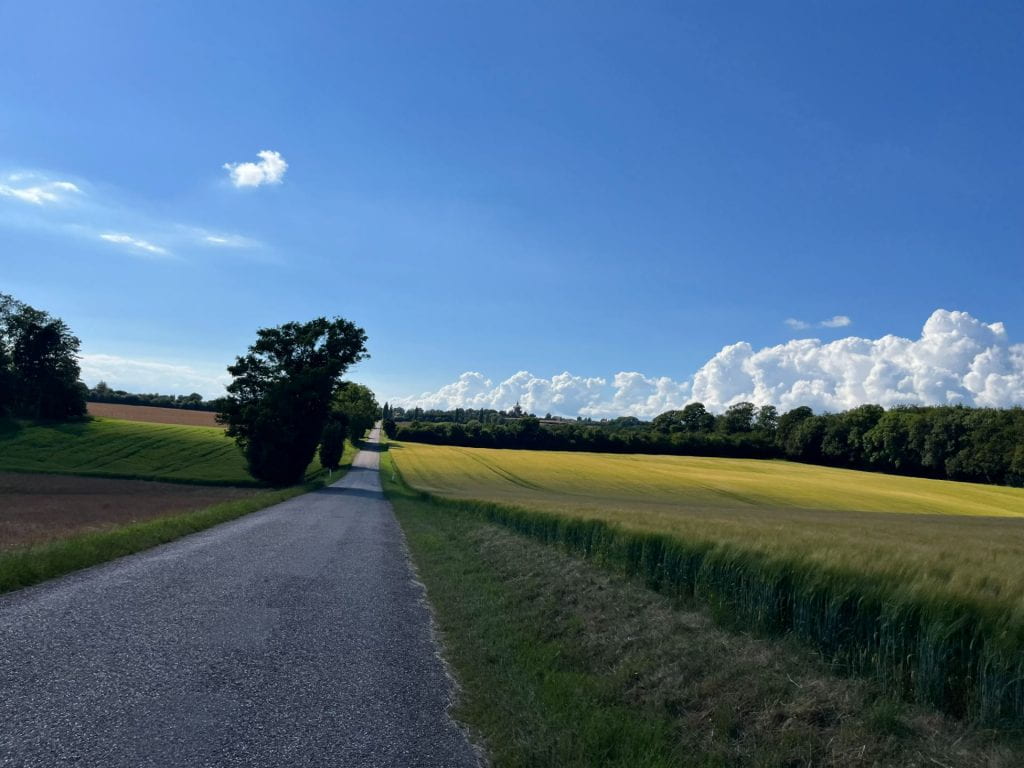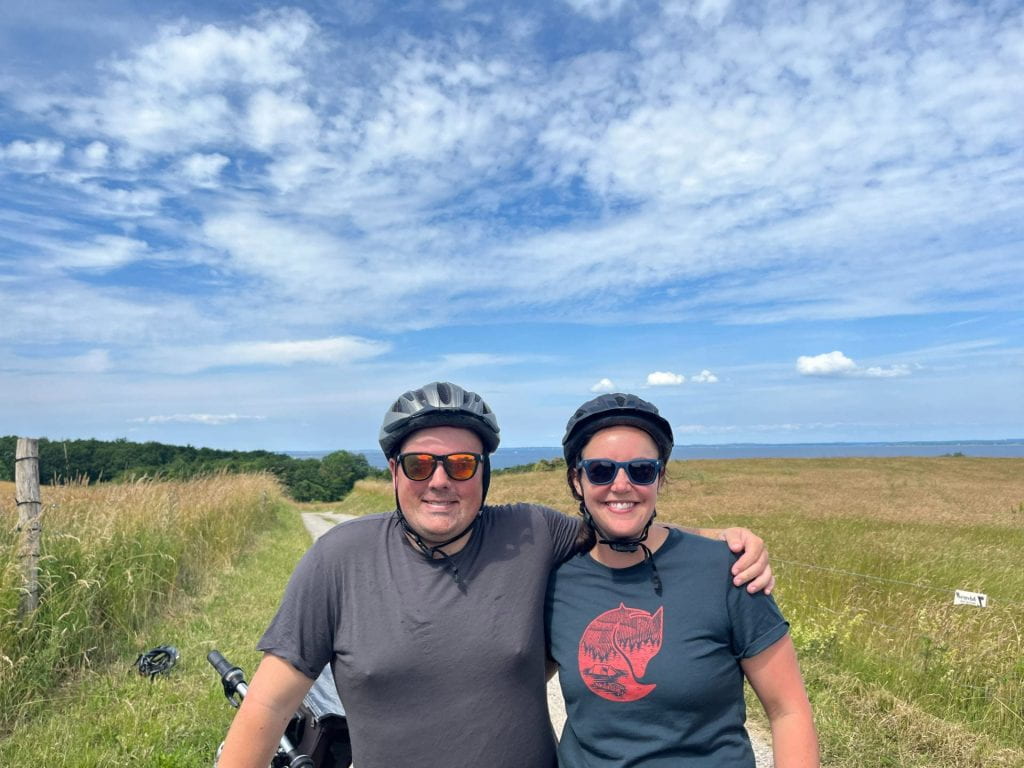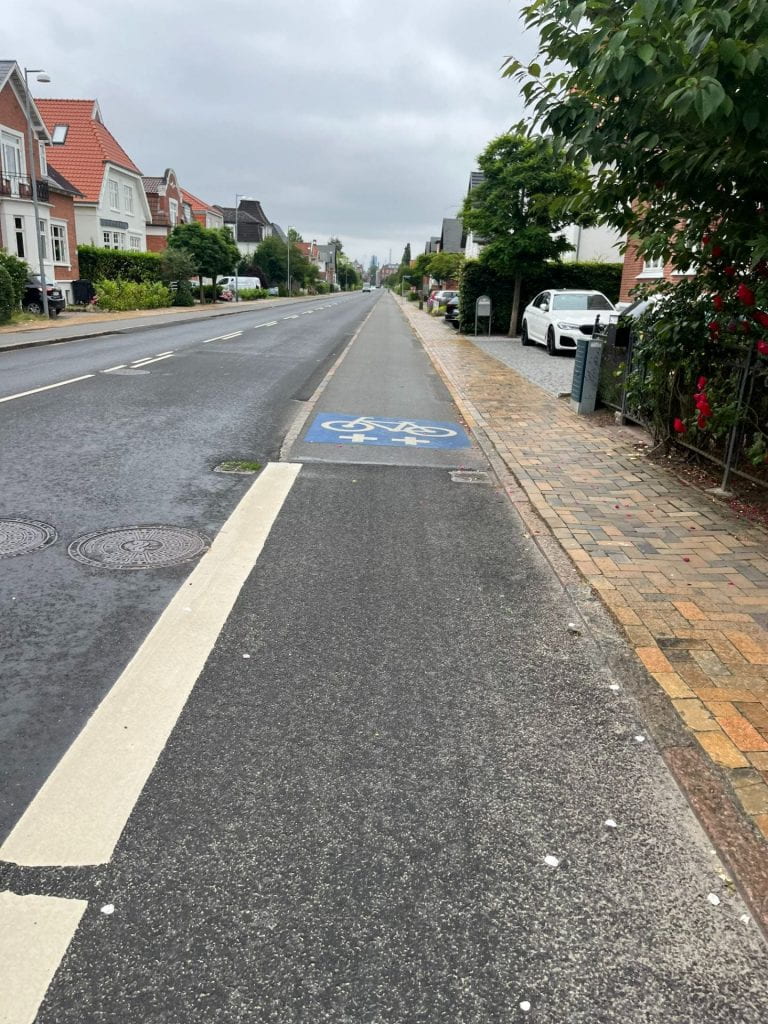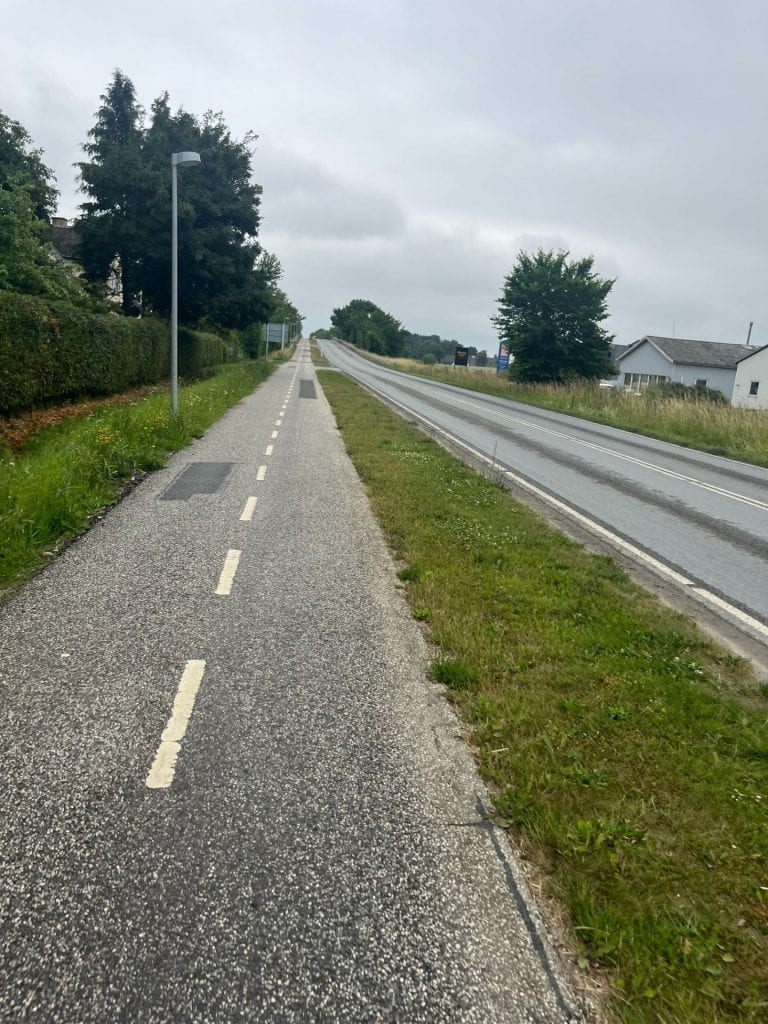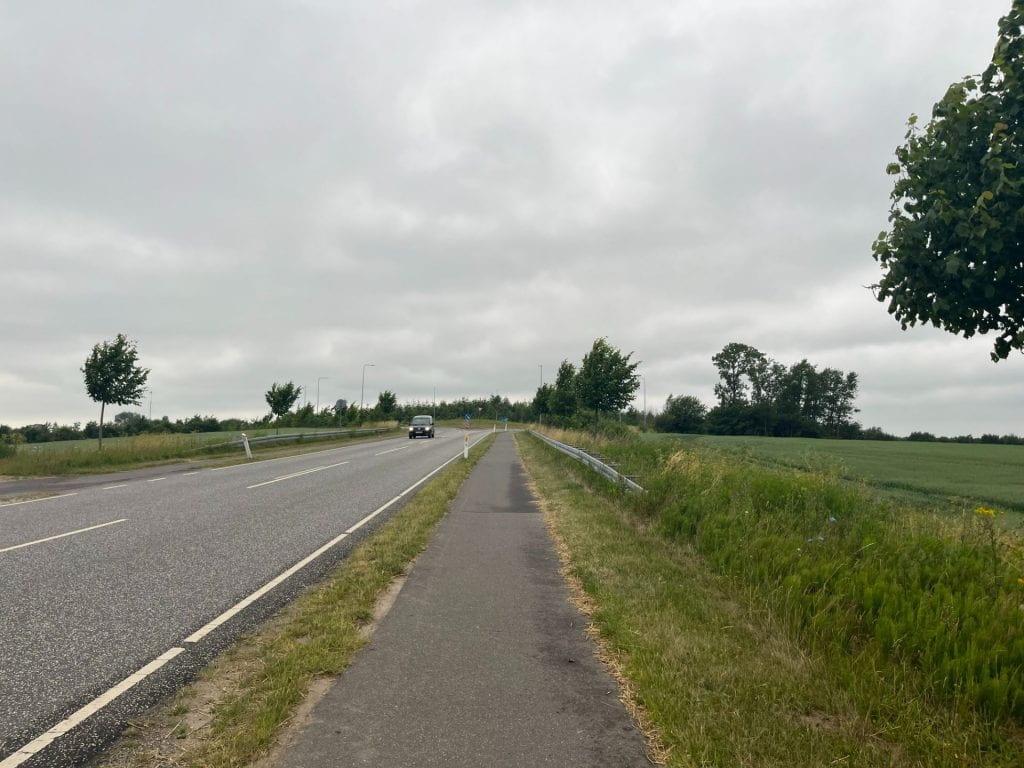Bicycle Touring in the Countryside
Our class focuses on planning for people on bikes in large cities, mid-sized cities, and small towns/rural areas. To facilitate this learning, we typically spend some days doing supported bike touring from location-to-location where our luggage is carried by our amazing on-site experts (Floris & Adam at Austin’s Adventures) while we ride our bikes from point to point. The rides range from 20-30 miles each day and encompass a diversity of infrastructure.
This year’s class brought us to different locations and destinations. Normally, we bike up the coast of Denmark to Helsingør, then take the ferry to Sweden and bike down the coast of Sweden to Malmö. COVID restrictions forced us to reconsider the schedule and route and allowed us to explore new areas. That has meant that we’re experiencing this part of the country the same time as students, which is tough from an educational perspective, but interesting to see our immediate reactions.
I have loved riding bikes since I was very small and used my bike as a way to get some freedom to go buy candy at the Dairy Mart and visit friends. At some point, I was allowed to bike down the hill out of the neighborhood to go to Dairy Mart by myself and it gave me freedom before I had a car. I have vivid memories of my first “long” bike rides – I remember a 6 mile ride to a friend’s house in high school and being so impressed with myself. Later in college, I started biking to campus because the bus was always full. When I moved back to Kentucky, I bought a cycling routes about riding in the Bluegrass. I vividly remember biking ~25 miles near Shakertown with my friend Ben and being so hungry and exhausted after! Later in college, I started dragging my dad out on rides in the countryside near our house in rural Kentucky. When he briefly retired in 2006, we enjoyed 20-30 mile road bike rides all over the Bluegrass until I moved to graduate school. I gradually started doing triathlons and longer rides. I’ve always loved road biking in rural areas and feel so centered and happy riding by bicycle through beautiful landscapes.
All of that is to say, I love sharing this hobby and passion with others and really enjoy seeing others go through that process of “I biked that far!? That was hard, but that was fun and beautiful!” But in the U.S., it’s really hard to, in good conscience, convince people to go out on rural roads when drivers go so fast and the infrastructure is so poor.
On this trip, it has been eye-opening and inspiring to witness a group of college students bike further than they ever have before nearly everyday. Many bike for transportation in the U.S. but few bike recreationally. When we debriefed some of the rural ride, the reactions were mixed – some loved it but some realized that biking without purpose wasn’t for them. For some, it inspired them to consider biking further distances that previously seemed unfathomable in the U.S.
Over the course of this week, we biked over 100 miles include 3 x 25-30 mile days. Here’s what our routes looked like:
- Tuesday: Optional 11 mile ride to Troense Island from Svendborg
- Wednesday: 27 mile loop around Aero Island
- Thursday: 25 mile ride from Svendborg to Kornith via Esegkov Castle
- Friday: 26 mile ride from Korinth to Odense via Ringe (some of the group got the fun experience of taking bike to train after an 11 mile cycle to Ringe!!)
A few thoughts about the infrastructure we experienced:
- A central part of the national bicycle strategy is thinking about cycling for recreation. What’s so cool about this is that you can plan low-carbon (carfree) cycling vacations that involve taking a train to a small town, then a ferry to an island for cycling.
- The strategy includes: safety & security, tourism, service, comfort, signage, and meaningfulness
- During our trip, we followed some signed routes and veered off path for some diversions (like castles)
- The quality of the infrastructure varied from rail trails to separated multi-use paths to lightly trafficked rural roads to highways with no shoulder.
- Cars were much more attentive and cautious around cyclists than in the U.S. Not speeding too fast nearby or honking.
- The countryside and island rides were really gorgeous and unique. It was great to enjoy those without a fear of cars.
- There’s something I love about riding from a small town/rural area into a city – we did this in Malmö and Amsterdam in 2019. It’s really eye-opening to see the exurban to suburban to urban landscape shift. Some aspects of urban form are really similar to the U.S. (like a McDonalds and Shell station adjacent to a highway). But the cycling infrastructure is completely different – from about 10 km from town, we were on a separated off-street facility the entire way. It was a cycling superhighway! At our presentation later in the day, we learned that the national government is putting an emphasis on longer distance routes to reducing greenhouse gas emissions.
A fun wayfinding note: Our guide/ co-leader Adam created many of the routes via RideWithGPS from afar. The visit to Kornith was new, so we ended up on a short highway section – all of us noted how unpleasant it was (though really much less miserable than U.S. roads of this nature.) At our bed & breakfast, Nick started talking to the host about the railroad station we saw and asked if there was still service there. He mentioned how they had developed a rail trail from Kornith to Ringe. We shifted our route based on this local intel and used the rail trail, then the Danish National Cycling Route 55 to get into Odense. The new route added a few miles (3) but was much safer and more comfortable than the original route. This happens in the U.S. as well – you often add mileage to be safer and more comfortable.


